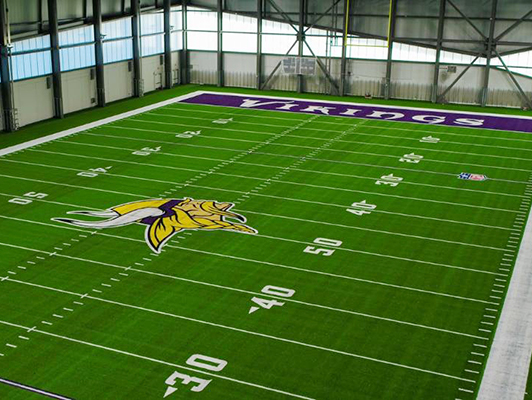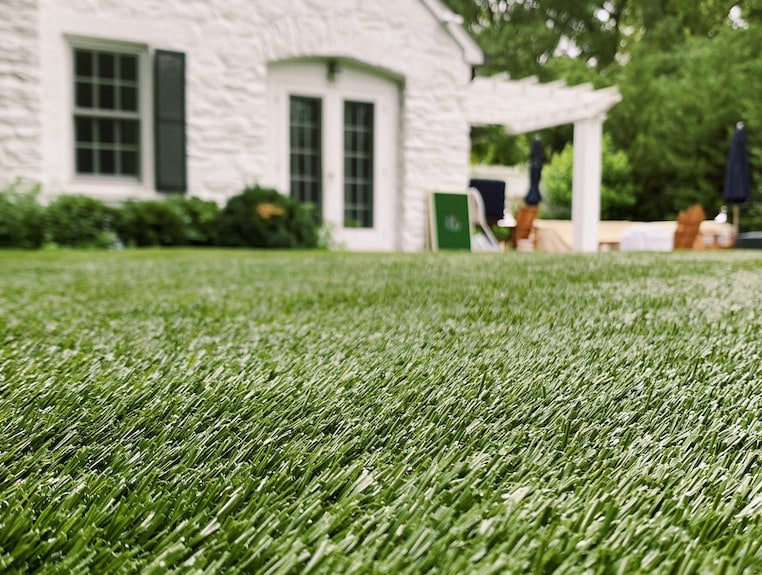Experience a Ideal Lawn with Arizona Artificial Turf for Any Outdoor Space
Delve Into the Environmental Perks of Opting for Artificial Lawn Solutions
The fostering of synthetic grass services presents a compelling opportunity to attend to pressing environmental obstacles. By substantially minimizing water usage and decreasing the application of hazardous chemicals, these alternatives not just promote lasting landscaping but additionally shield local ecosystems. Moreover, the reduced carbon impact connected with decreased upkeep tasks adds to a more lasting technique to land administration. Nonetheless, the implications of these benefits extend beyond mere preservation efforts, questioning regarding their long-term effect on environment preservation and total environmental balance. Checking out these measurements exposes a complex interplay worth thinking about.
Water Conservation Perks
One of one of the most considerable benefits of artificial turf is its capability to save water. Typical grass lawns require considerable watering, specifically in locations vulnerable to dry spell or water restrictions. In contrast, synthetic grass does not require watering, considerably minimizing the general need for water resources. This feature is especially advantageous in dry regions where water deficiency is a pushing concern.
By getting rid of the demand for routine watering, fabricated grass contributes to lasting landscape practices and assists mitigate the environmental influence of excessive water intake. The preservation of water extends to the reduction of drainage, which can lead to dirt disintegration and waterway contamination.
In addition, the setup of synthetic grass enables municipalities and property owners to assign water sources a lot more effectively, focusing on necessary uses such as drinking water and farming. The shift in the direction of synthetic lawn not only promotes accountable water use yet additionally straightens with more comprehensive ecological objectives targeted at preserving natural sources.
As areas significantly prioritize sustainability, the water conservation advantages of synthetic grass provide a compelling situation for its adoption in household and commercial landscaping jobs.
Reduced Chemical Use
The change to fabricated lawn dramatically lowers the dependence on chemical therapies commonly used in natural grass maintenance. Traditional grass monitoring commonly entails the application of chemicals, fertilizers, and herbicides to advertise development and control pests. These chemicals can posture dangers to human wellness, regional wildlife, and the atmosphere, adding to dirt and water contamination.
In comparison, synthetic grass gets rid of the demand for these damaging materials. Once mounted, it calls for marginal upkeep, mainly consisting of regular cleaning and seldom infill replenishment. This decrease in chemical usage not just benefits the instant setting but likewise adds to wider ecological security. By decreasing the release of synthetic substances right into the ecosystem, synthetic grass advertises healthier soil and water supply.
Furthermore, the lack of chemical drainage linked with synthetic grass setups aids shield local waterways from air pollution, sustaining water life and preserving biodiversity. Phoenix turf companies. As neighborhoods increasingly focus on lasting techniques, selecting synthetic lawn offers a sensible solution that aligns with environmental conservation objectives. Via this change, residential property proprietors can appreciate lavish green rooms without endangering eco-friendly wellness, leading the method for a more lasting future
Lower Carbon Footprint

Additionally, the installment of synthetic grass can result in significant water conservation. All-natural yards need considerable quantities of water for irrigation, which not just includes in the carbon impact connected with water removal and treatment but likewise strains regional water resources. On the other hand, artificial lawn needs minimal upkeep, calling for no watering, consequently considerably decreasing water usage and its associated energy expenses.
In addition, the long life of synthetic grass adds to its reduced carbon influence. With a life expectancy of approximately 15 years or even more, the demand for constant replacements is decreased, causing less waste and lower power consumption in manufacturing and taking care of typical lawn alternatives. Generally, artificial lawn offers a sustainable choice for environmentally conscious landscaping.
Environment Conservation
Environment preservation is a critical factor to consider in the debate over landscaping choices, particularly when contrasting have a peek at this site synthetic grass to natural yard. Natural lawn lawns usually need substantial upkeep, including using fertilizers, chemicals, and herbicides, which can detrimentally impact regional communities. These chemicals can seep right into the soil and rivers, harming indigenous vegetation and animals and interrupting neighborhood habitats.
In comparison, artificial lawn presents an opportunity to lower the ecological impact of landscaping. By deciding for synthetic grass, house owners can decrease the disruption of all-natural environments connected with traditional lawn treatment practices. Synthetic grass gets rid of the requirement for dangerous chemicals, thus protecting close-by wild animals and maintaining the stability of bordering ecological communities. In addition, the installation of fabricated grass can lead to the conversion of former lawn locations right into even more biodiverse landscapes, such as pollinator yards or native plant locations, which can support local wild animals.
Ultimately, the transition to synthetic grass not just preserves water and lowers upkeep efforts however likewise cultivates a much more harmonious partnership in between human activities and the natural environment, advertising environment conservation at the same time.
Long-Term Sustainability
Lasting sustainability is a vital consider reviewing the benefits of synthetic turf over typical yard yards. One of one of the most considerable benefits of synthetic lawn is its sturdiness; it can last approximately 15-20 years with very little maintenance, whereas natural yard requires regular reseeding and replacement. This longevity lowers the demand for continuous resources, such as water, fertilizers, and chemicals, which are crucial for maintaining a healthy and balanced yard yard.
In addition, synthetic grass adds to a decrease in carbon exhausts connected with lawn treatment devices. Traditional grass commonly need gas-powered mowers, trimmers, and blowers, all of which contribute to air contamination. Arizona artificial turf. On the other hand, synthetic grass gets rid of the need for such tools, advertising a cleaner setting
Additionally, the manufacturing of synthetic grass progressively makes use of recycled products, enhancing its sustainability account. As producers take on eco-friendly techniques, the ecological footprint of synthetic grass continues to decrease.

Conclusion
The fostering of synthetic grass solutions presents significant environmental advantages, including considerable water conservation, decreased reliance on unsafe chemicals, and a reduced carbon impact. Synthetic lawn help in protecting all-natural habitats by reducing land disruption and advertising long-lasting sustainability with the use of durable materials. Jointly, these variables emphasize the capacity of synthetic grass to add favorably to ecological health and offer a practical choice to typical landscape design techniques in an increasingly resource-conscious world.
In comparison, man-made grass does not need watering, considerably reducing the total demand for water sources. By minimizing the release of artificial special info substances right into the ecosystem, man-made lawn promotes much healthier soil and water systems.
Furthermore, the installation of artificial turf can result in considerable water preservation. In comparison, fabricated grass needs minimal upkeep, requiring no watering, thus significantly minimizing water use and its linked energy costs.
